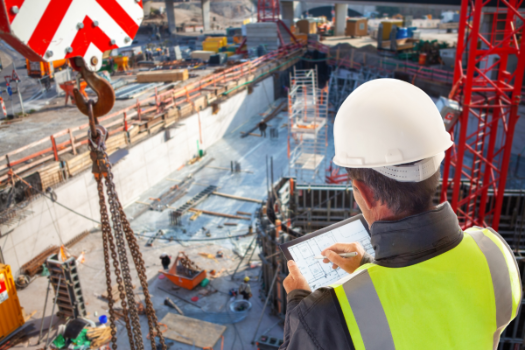
Predictive Analytics with BIM in Construction Sites
Introduction
The construction industry is entering a new era of innovation with Predictive Analytics and Building Information Modeling (BIM). Together, these technologies create smarter workflows and better project outcomes. Predictive Analytics uses data to forecast future scenarios, while BIM provides a detailed digital blueprint of a building. Their integration marks a turning point in how projects are planned and executed.
This article explores how combining Predictive Analytics with BIM can transform construction. From improving efficiency to reducing risks, these tools offer solutions to longstanding industry challenges. We will discuss their role in streamlining schedules, managing costs, and enhancing safety on-site. By adopting these technologies, construction teams can work more confidently and proactively.
The growing use of Predictive Analytics and BIM reflects a major trend in the industry. As data-driven tools become more accessible, they are reshaping the way buildings are designed and constructed. Let’s dive deeper into how this partnership is unlocking new possibilities for smarter construction.
Understanding Predictive Analytics in Construction
Predictive Analytics is a method of using data to foresee future outcomes. It combines historical data with real-time information to create accurate forecasts. In construction, this means predicting project risks, schedules, and costs before issues arise. By identifying potential challenges early, teams can take action to avoid delays and reduce costs.

The relevance of Predictive Analytics in construction lies in its ability to transform planning and decision-making. With data-driven insights, project managers can allocate resources more effectively. For example, teams can identify when and where materials are needed, preventing shortages. It also helps predict equipment failures, reducing downtime and improving efficiency.
Studies show that companies using Predictive Analytics experience fewer disruptions. For instance, advanced data analysis can save large projects significant costs. By embracing Predictive Analytics, construction businesses can work smarter and stay ahead in a competitive market.
The Role of BIM in Modern Construction Projects
Building Information Modeling (BIM) is a process that creates detailed digital models of construction projects. These models represent a building's physical and functional characteristics, offering a single source of accurate project information. BIM is not just a design tool; it’s a foundation for collaboration and better project management.
BIM provides a comprehensive digital blueprint of a project. It includes everything from structural elements to materials and systems. Teams can visualize designs in 3D, making it easier to identify potential issues before construction begins. This reduces errors and ensures that every detail aligns with the project’s goals.

The advantages of BIM go beyond visualization. It improves communication between architects, engineers, and contractors by providing a shared platform for data. This leads to more efficient workflows and fewer misunderstandings. BIM also enhances accuracy, ensuring that designs translate seamlessly into execution.
BIM adoption is growing rapidly across the industry. Companies using BIM report higher project success rates and fewer delays. Governments and organizations worldwide are even mandating its use on large projects. By embracing BIM, construction teams can work more effectively and deliver better results.
Integrating Predictive Analytics with BIM: A Game Changer
Integrating Predictive Analytics with Building Information Modeling (BIM) combines two powerful tools for smarter construction management. Predictive Analytics takes data from BIM models and other sources to predict outcomes like project delays, cost overruns, and safety risks. This integration allows construction teams to go beyond planning and make proactive decisions based on accurate forecasts.

The process works by feeding real-time data from BIM into predictive models. These models analyze patterns and trends, giving project managers insights into potential issues. For example, if weather conditions are likely to delay a delivery, teams can adjust schedules in advance. Similarly, if the data suggests equipment failures, maintenance can be scheduled before breakdowns occur. This real-time feedback helps teams adapt quickly and keep projects on track.
The benefits of combining Predictive Analytics with BIM are significant. Projects see cost savings through better resource allocation and reduced waste. Safety improves as teams can predict and address hazards before they happen. Workflows become more efficient, with fewer disruptions and smoother operations.
Many projects already demonstrate the success of this integration. Large-scale projects have reduced delays and minimized material waste by aligning real-time data with predictive models. These results show how this technology is transforming construction into a more precise and efficient industry.
Practical Applications on Construction Sites
Integrating Predictive Analytics with BIM is transforming how construction sites operate. One key application is predictive maintenance. By analyzing equipment data through BIM models, teams can forecast when machinery might fail. This allows for timely repairs, reducing costly downtime and keeping projects on schedule.

Risk management is another critical area. Predictive Analytics uses real-time data to identify potential safety hazards. For example, weather forecasts integrated into BIM models can warn of unsafe working conditions. This proactive approach minimizes accidents and ensures a safer job site for workers.
Schedule optimization is equally impactful. Teams can predict delays caused by material shortages or labor gaps. By adjusting timelines early, construction projects avoid costly overruns. Projects using predictive data have shown improved schedule accuracy and efficiency.
Real-world examples highlight the success of these applications. Major infrastructure projects have prevented equipment failures and optimized deliveries based on predictive insights. These examples demonstrate how integrating these tools improves efficiency, safety, and project outcomes.
Challenges and Considerations
While integrating Predictive Analytics with BIM offers immense potential, it comes with challenges. One major issue is data quality. Inaccurate or incomplete data can lead to flawed predictions, reducing the effectiveness of these technologies. Ensuring clean, reliable data is critical for successful implementation.
Integration complexities also pose hurdles. Combining Predictive Analytics with BIM requires seamless coordination between various systems and software. Without proper alignment, the integration may fail to deliver the desired results. Additionally, adopting these tools demands skilled personnel. Teams must have the expertise to manage data, interpret analytics, and use BIM effectively.

Overcoming these challenges is essential to unlock the full benefits. Construction companies can invest in training programs to upskill employees and hire experts to manage the integration. Implementing clear data standards and workflows can ensure higher data quality. Collaborating with experienced technology partners can also simplify the integration process.
By addressing these obstacles head-on, construction businesses can maximize the value of Predictive Analytics and BIM. These efforts will pave the way for smarter, safer, and more efficient projects.
Conclusion: Embracing the Future of Construction
Integrating Predictive Analytics with BIM is revolutionizing the construction industry. These technologies empower teams to predict challenges, optimize resources, and deliver projects more efficiently. By adopting this data-driven approach, businesses can reduce risks, improve safety, and save costs.
The potential for transformation is immense. Companies that embrace these innovations now will position themselves as leaders in the future of construction. Predictive Analytics and BIM are not just tools; they are game-changers shaping smarter and more sustainable projects.
Explore how these technologies can enhance your projects and take the next step toward smarter construction today.